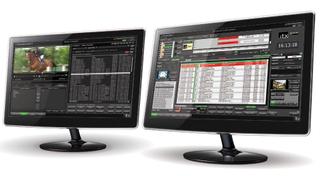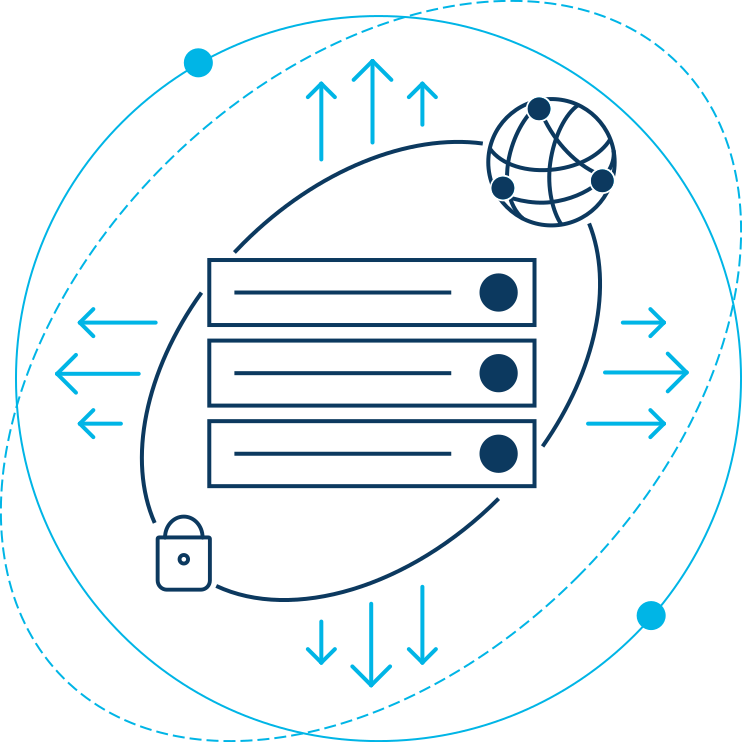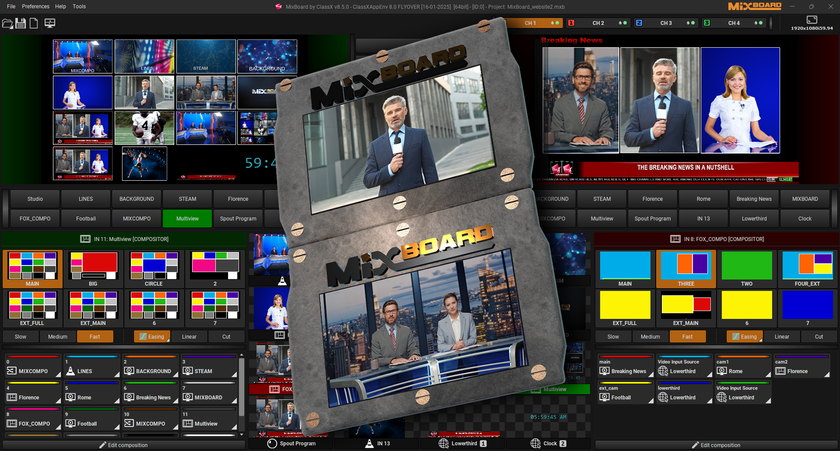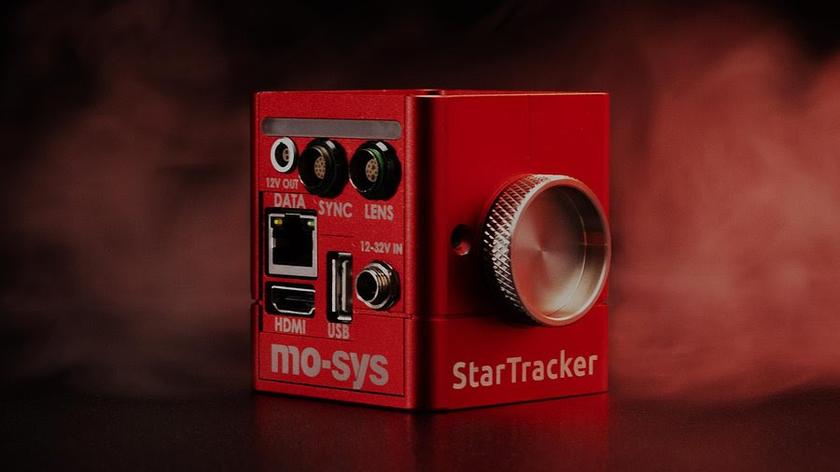Virtualized Playout Promises Greater Security, Flexibility
NEW YORK—Fixed-purpose hardware-defined processing and delivery solutions have been standard in the world of video production for decades. However, these legacy systems, which require a large number of components and can be costly to deploy and maintain, have given way to more cost-effective software-based solutions that provide numerous benefits in video production that weren’t available with those dedicated hardware solutions.

“Virtual playout is becoming one of the enablers for broadcasters and content producers to do something that they were not really able to do before, which is to start launching hyper-specialized channels, so that they can have dedicated or targeted audiences they can address more easily, and can then start to monetize these new, more granular types or segments of the audience,” said Kevin Savina, director of product strategy at Dalet.
This move towards virtualization in the industry has spawned a new buzzword, “orchestration;” and it could be said that there are a symphony of opportunities that it now presents. However, to take advantage of what virtualization offers, there are actually two types of this orchestration that need to put in place.
“The first is a technical one, which is to orchestrate the appearance and provisioning of these virtual playout solutions,” added Savina. “And the other, which is the one that we are playing more of a role in, is to orchestrate the production process and the content preparation process to feed in these new types of channels that are suddenly appearing.”
On a more basic level orchestration also explains the lifecycle management of the workload that one would want to operate.
“Workloads need to be designed in terms of the functions needed and the topology of content flows between them and captured to a representation that’s readable by humans and computers,” said John R. Naylor, director of product security for Ross Video. “From a vendor’s perspective, at minimum we provide an API for virtualized products that enable them to be plugged into the workload’s topology.”
THE IMPORTANCE OF ORCHESTRATION
Today, even the term “virtualization” itself remains very much another industry buzzword—one that to some is now part of the industry’s migration to the cloud.
“At Harmonic we’re typically thinking of the cloud when we’re talking about virtualization,” said Andy Warman, director of playout solutions at the company. “However, the private and public cloud deployment has been changing over time and this is why this discussion of orchestration is important as it is necessary for multichannel deployment. Orchestration is far more significant than ever as it can take the function of the cloud with an effectively limitless pool of resources.”
It is allowing for greater customization in terms of how content can be delivered.

“With the advent of virtualization we have the ability to deploy systems quickly, and start up new channels as customers need these such as for live events,” said Karl Mehring, director of product management for playout at Grass Valley.
The issue in the short term is how virtualization will fit with legacy systems, even with the benefits it offers broadcasters and production houses.

“Not every customer has the ability to rebuild their production environment,” said Steve Reynolds, president of Imagine Communications, whose Virtualized Master Control solution that provides the ability to consolidate, streamline and create consistent workflows across teams. “We’re seeing that some will rely on a hybrid solution that includes an SDI-based infrastructure in the studio, while some customers have moved to virtualization in control and playout.”
To facilitate such a solution, Reynolds said some clients are creating so-called “islands of SDI functionality,” where content is then transferred to an IP environment in the same facility. “We see this as an integration layer where the old world and new world can talk together.”
MAKING THE TRANSITION
The biggest challenge in virtualization appears to be the ongoing transition the industry faces with the move from legacy systems. This requires more collaboration between vendor and customer, according to Daniel Robinson, Head of R&D at Pebble Beach Systems.
“Broadcasters can see where they want to go, but frequently have no idea how to get there when discussing virtualized and IP evolution,” he said. “The secret to our success, and the reason we have over 100 virtualized channels on the air today is that we partner with our customers and take a collaborative approach to ensure we meet their needs at a pace which suits them. It’s a unique strength that we’re very proud of.”
Going from SDI to IP will also require flexibility and openness to change.
“The hard point of the transition will depend on how integrated a user is with the old-style broadcast infrastructure,” said Savina. “Moving forward, broadcasters also need to think in terms of multiple outputs that include linear streams, and if you don’t have the right tools upstream you could find yourself in deep trouble.”
However, this isn’t the first time the industry has faced a transition and while this one will end up being less about hardware, broadcasters and production facilities should be prepared for this brave new world.

“There are good examples with the move we’ve seen from tape to tapeless workflows,” said Warman. “We went through a very similar type of transition, and while we’re still not quite all the way with the transition to virtualization we’re making good progress.”
This move to virtualization is also providing new ways to do the same job.
“We are seeing less obvious solutions such as Software as a Service [SaaSs], and this provides the latest technology and also frees up the end user from inconvenient maintenance and upgrade cycles, and allows the user to focus on content delivery instead of software upgrades,” added Warman.
Another advantage is that the cloud offers the ability for users to experiment without a major investment in completely new hardware.
“It is easier to update software than a hardware board,” said Mehring. “That gives you the flexibility in how you modify your services.”
KEEPING IT SECURE
The move to virtualization introduces other challenges—including the fact that “content” and “data” will be increasingly interchangeable terms. And where there is data there is the risk of a breach.

“Cybersecurity is a huge concern for anyone in this industry, especially as the move to solutions that aren’t housed in four walls of a broadcaster,” said Bea Alonso, director of product marketing at Dalet. “It is difficult to keep up with the number of threats, but we should remember there was no security on the old VTRs.”
The industry will need to realize the nature of potential threats, but also take advantage of the available countermeasures. Security is about defending three principles: availability, integrity and confidentiality, according to Naylor.
“This priority order is the reverse of how government agencies and the military usually put them but is what’s appropriate for commercial operations,” he said. “The loss of confidential information is prevented using standard controls similar to those in place in a traditional broadcast infrastructure. The only twist that virtualization possibly adds is when your workload is but one of multiple tenants on a physical host which theoretically opens it up to attack from co-hosted bad actors.”
Broadcasters are not facing cyber threats alone—and in fact are actually late comers at least in terms of needing cybersecurity. Thus there are plenty of examples of how it has been done right in other industries.
“Because we are moving to standard IP technology and standard IP platforms we can draw from industries that are much wider than broadcast industry,” said Reynolds. “We can look at others, and by no means are a first mover so we have the advantage to draw upon experts and best practices.”
FUTURE PROOFING PRODUCTION
The final consideration to virtualization is the advantages that it could offer to content creators at all levels. This could be the final significant transition, in part because it is more future proof than legacy hardware. This is notable as the industry underwent only minor updates in the early days of video production from the early days of television until the late 1990s with the beginning of the transition from standard definition to HD.
Since then the industry has—in essence—experienced one transition after another, but virtualization could result in the end of such major transitions.
“Our upgrade path is much more streamlined than ever before,” said Reynolds. “We had the move from 1080 to 4K, and we can look at that as a blueprint for future moves. With HD to 4K you replaced a couple of components but you didn’t have to significantly replace everything in the workflow, just a few codecs. It resulted in a much more streamlined way to make a transition and that is what we can expect going forward. We will then move from a ‘revolution’ change and back to a more traditional ‘evolution.’”
Of course getting to that point will still require some effort however.
We’re at the point where users are getting over learning about the technology and finally putting it to use,” said Mehring. “We’re not at the end, but this is the end of the beginning.”
Get the TV Tech Newsletter
The professional video industry's #1 source for news, trends and product and tech information. Sign up below.













